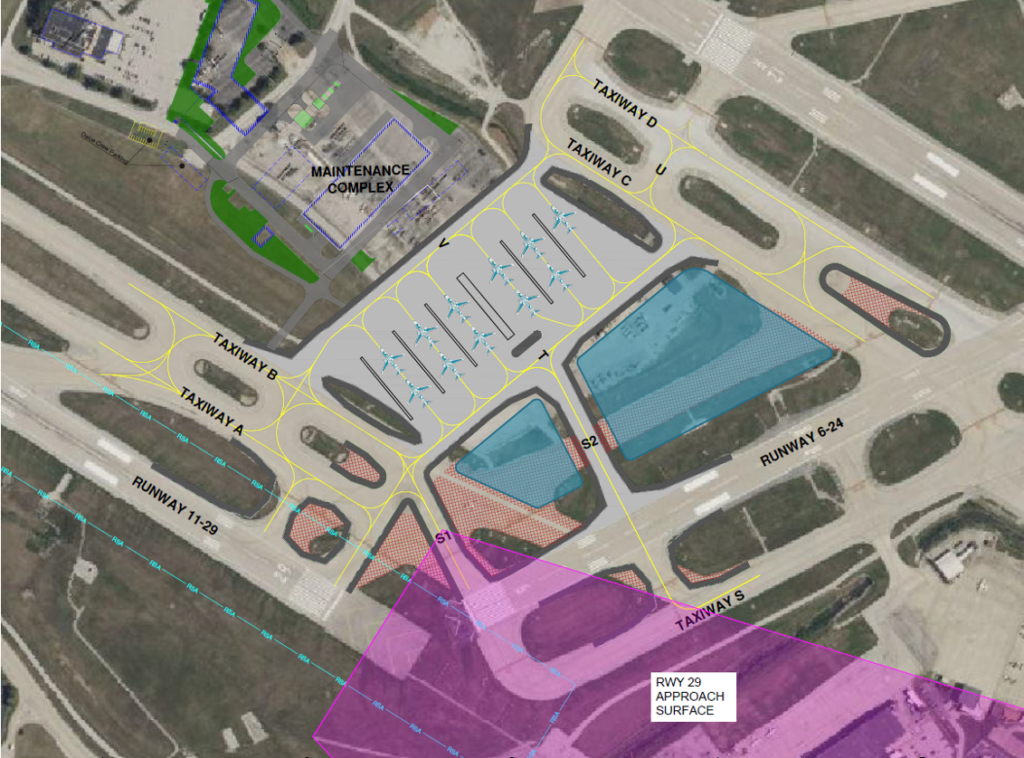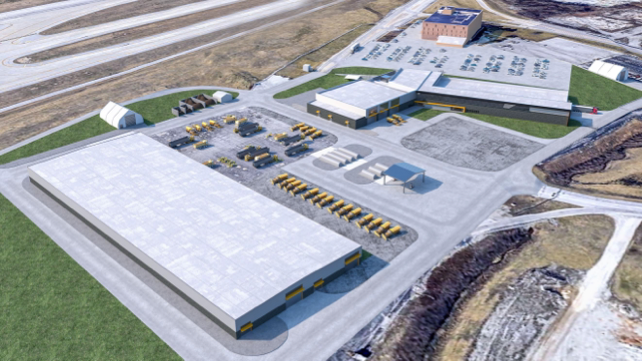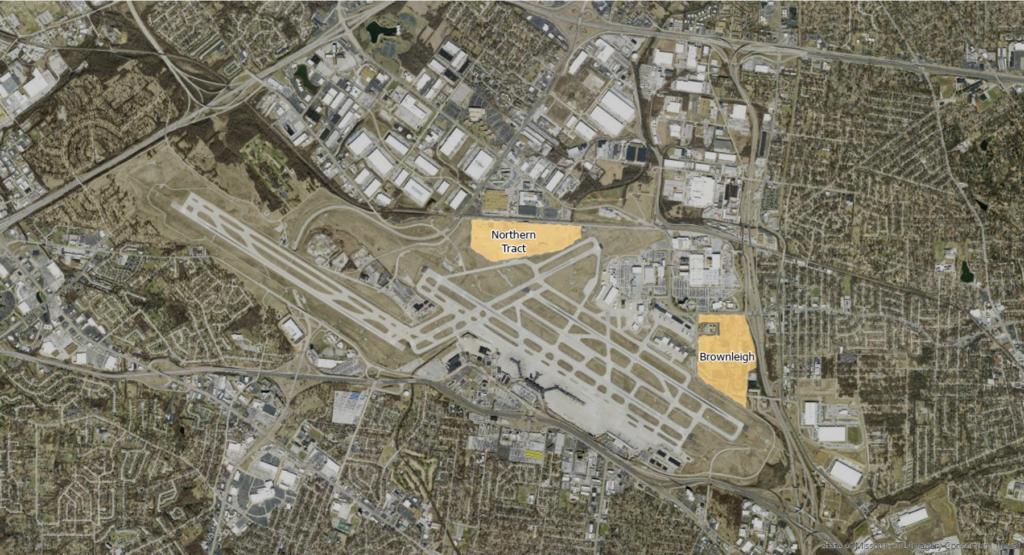What Does the Future of STL Look Like?
How many more guests will we welcome? What types of facilities will be needed to accommodate the next generation of travelers?
To answer these questions, The Federal Aviation Administration (FAA) approved STL’s 2023 Master Plan, a proposed roadmap to guide long-term development at STL. The Master Plan identifies a collection of projects that would be required to accommodate up to 40 million annual passengers and more than 500,000 annual aircraft operations, the estimated maximum capacity of the existing airfield.
No runway expansion is proposed in the approved Master Plan.
Airport Master Plan
Planning for the Future
Funding
- No general City or local tax dollars will be required. The airport funds its own operation entirely with aviation-generated funds, and the same is true for our ongoing and future capital improvement projects.
- Funding sources for a proposed single-terminal project would include, but not be limited to, airport revenue bonds, landing fees, parking fees, concession revenues, and rents.
- Looking at other new terminal programs at medium hub sized airports (like Kansas City International, New Orleans International, and William P. Hobby in Houston), the cost range at these facilities is $40-45M per gate and our plan includes up to 62 gates and is in line with industry costs.
Passenger Terminal Projects
|
Dilemma |
Solution |
|---|---|
|
Growth in Passengers |
|
|
Old/Aging Facilities |
|
|
Inadequate Concessions |
|
|
Insufficient Revenue Opportunities |
|
Proposed Concept
- Passenger Convenience
- Customs Accessible to All Carriers
- Single Efficient Security Checkpoint
- Gates on Both Sides (Shorter Walks)
- New Roadways & Entrance
- Concourse Can Expand Further
- Right-Sized Space
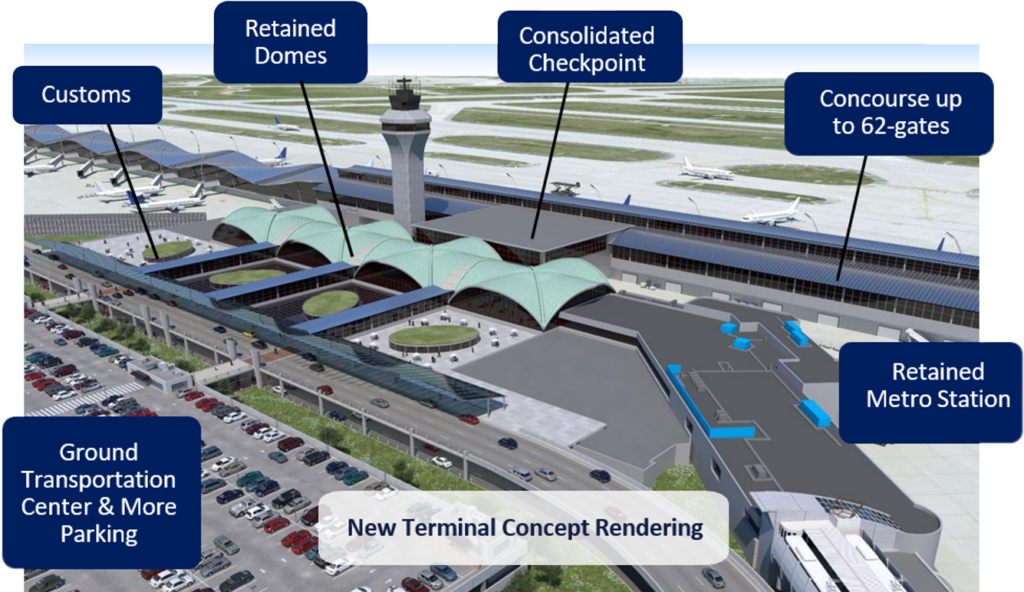
Proposed Concept – Roadways and Larger Parking Garage
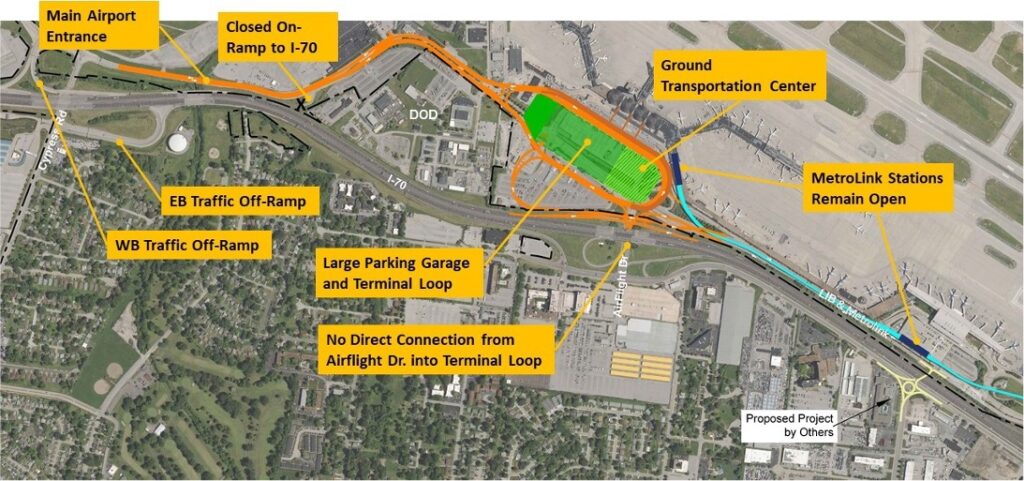
Timeline for Passenger Terminal Projects
- Airline Negotiations for Design and Enabling (Completed)
- NEPA for WAP and CTP (Completed)
- Executive Program Manager (Awarded to Paslay Group)
- Airline Negotiations for new AUA (Started in August 2024)
- Program Manager Contract (Awarded to 1STL Joint Venture)
- CTP Designer (Awarded to HOK)
- Garage/Roadway Solicitation (Awarded to HDR)
- CMAR Contract Solicitation (Presentations Scheduled)
- Enabling Project Construction (Begins later this year)
- Terminal/Garage Construction Authority (Late 2026)
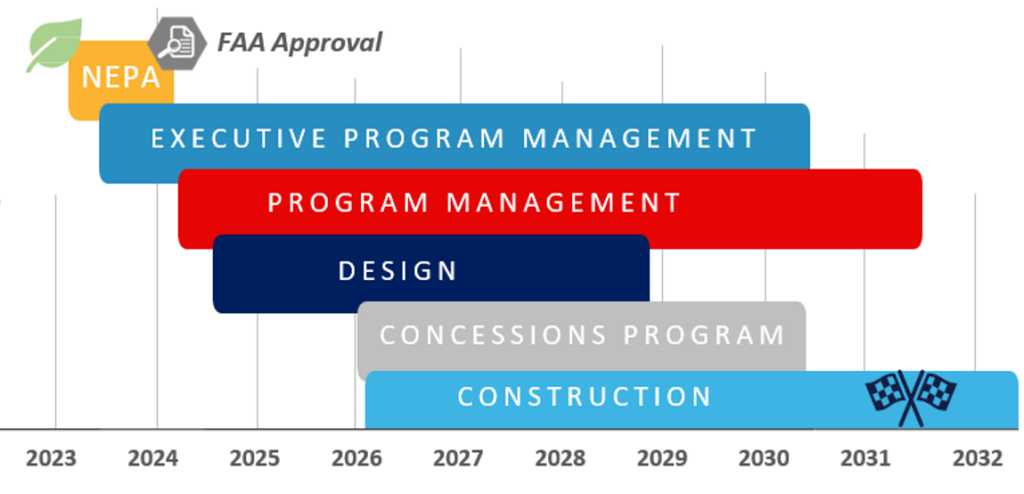
Airfield Projects
Proposed Concept — West Airfield Program
Proposed Concept — Airfield Maintenance and Central Stores Campus
Are the Consolidated Terminal Program and West Airfield Program projects definitely going to be carried out?
Not necessarily. These proposed projects require airline agreement, funding approvals, as well as state and local permits.
On-Airport Tenant Projects
Boeing Site Development for Aircraft Assembly and Flight Testing
Overview
The Boeing Company is expanding its on-airport facilities to support defense-related aircraft assembly and flight testing.
This project will:
- Development currently underutilized airport property
- Support regional economic development, and
- Provide facilities necessary to support national defense requirements.
Boeing plans to expand its current footprint by leasing two parcels of airport property to the north and northeast of the airfield. The project will consist of constructing aircraft assembly and test facilities, including demolition of non-functional structures. New connector taxiways and tow ways will provide access onto the airfield.
Environmental Assessment
An Environmental Assessment (EA) to assess the potential environmental consequences of Boeing’s site development project was conducted. After evaluating the EA, the Federal Aviation Administration issued a Finding of No Significant Impact/Record of Decision (FONSI/ROD)
The EA and FONSI/ROD are available to the public pursuant to Part 1506 of the Council On Environmental Quality Regulations concerning implementation of the National Environmental Policy Act. The EA and FONSI/ROD can be viewed online at Final EA and FONSI ROD for Boeing Site Development at STL. Additionally, the EA and FONSI/ROD can be viewed in person at the STL Airport Administration office, as well as at the Federal Aviation Administration, Airports Division, 901 Locust, Kansas City, Missouri 64106.
Questions/Comments
If you have any questions or comments regarding on-airport development at STL, please contact Jim Neidel, STL Manager, Planning/Development at 314-551-5027 or jrneidel@flystl.com.


